A flooded basement is every homeowner’s worst nightmare. A sump pump protects your property from heavy rains and rising flooding, which can result in massive repair bills and structural damage.
Table Of Contents
−- What is a sump pump?
- What Is the purpose of a sump pump?
- How does it work?
- Where should a sump pump’s water drain to?
- What are the benefits of sump pumps?
- Types of sump pumps
- What type of sump pump do I need?
- Sump pump switch types
- Accessories for Sump Pumps
- The price of a sump pump
- Are sump pumps necessary?
- How frequently should a sump pump run?
- What is the average lifespan of a sump pump?
- What causes sump pumps to fail?
- How can I know if my sump pump needs to be replaced?
- Loud noises originating from the sump pump pit suggest some problems with your pump
- A loud noise may also suggest a faulty impeller
- If the pump is always operating, it has reached the end of its useful life or is soon nearing it
- A constantly running pump could result from a faulty or blocked float switch
- A float valve that is too low in the basin can strain the pump unnecessarily
- The most common mistakes you can make
- Keeping a sump pump in good working order
- What to do in the event of a flood
Understanding which of the several types of sumps pumps best meets your requirements is critical. In the sections below, we’ll walk you through how a sump pump operates and how to choose the best one for your property.
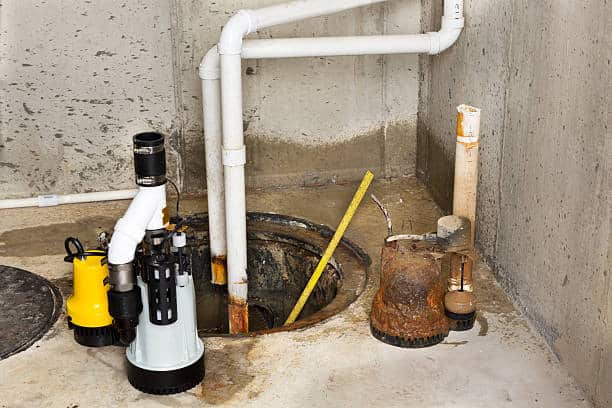
What is a sump pump?
Sump pumps pump water from your basement and away from your house. A sump is a pit that forms naturally. A hole is usually dug beneath the major surface of your basement floor. The sump pump is housed in this pit, known as a basin. The pump is outfitted with valves that detect rising water levels or pressure.
A bit of history
Sump pumps, invented in 1946 by U.S. Navy electrician Karl Niedermeyer, have been a frequent feature in homes for decades. Sump pumps were typically installed in houses built on floodplains or below the water table until the late 1980s.
Sump pumps were necessary for many new homes in 1987 by the United States Federal Clean Water Act, so if you have a newer house, you probably have a sump pump – even if you live in a drier location.
Sump pumps aid in the prevention of groundwater infiltration, but they are also highly useful if your cellar floods due to a busted pipe or a washing machine malfunction.
What Is the purpose of a sump pump?
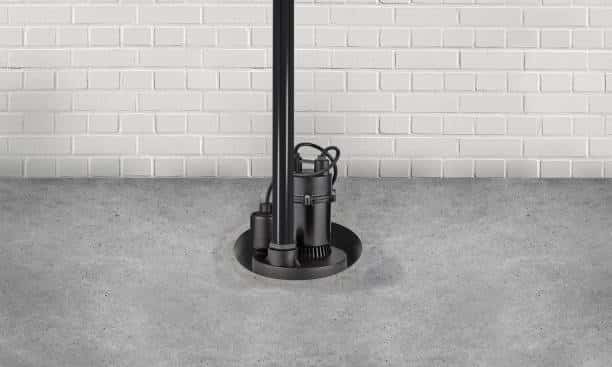
You have a sump basin in your basement or crawl space, most likely in a corner or against an outside wall (also called a sump pit). When you remove the debris cover and peek inside, you’ll notice multiple holes in the sump basin’s wall.
Each of these holes is connected to a drainpipe:
Some drain pipes originate from weeping tile pipes outside your home’s foundation, while others link to internal drainage systems beneath your basement floor.
When groundwater collects outside your foundation or beneath your basement floor, it runs into your sump basin via a drain pipe. Your sump pump activates when the water level reaches a specified level. Sump pumps are turned on using one of two methods:
When the water pressure in your sump pit surpasses a certain level, a pressure sensor sends a signal to your pump.
A float activator arm with a buoyant ball connected that floats on the water’s surface. Your sump pump activates when the water level reaches a specified level.
An impeller within your pump pulls water from the sump pit and delivers it up a discharge line using centrifugal force. The discharge pipe drains somewhere beyond the foundations of your home.
To prevent freezing in the winter, discharge pipes should be buried at least 5 inches below the frost line. They should also flow downhill wherever possible.
How does it work?
When the water level rises too high, sump pumps use a discharge line to automatically pump excess water out of the basement and away from your home. The effluent line links the sump pump to a specified drainage area.
Sumps are typically 2 feet deep and 18 inches across. When the water level reaches a specified level, a floating switch completes an electrical circuit and activates the pump. A one-way check valve is typically included in systems to prevent discharged water from returning to the pit.
Many sump pump systems include alarms that notify the homeowner if water rises above a specific level, suggesting that the pump is failing. Modern smart pump alarms can also transmit notifications directly to your phone.
Additional sump pump sirens indicate the backup pump has activated, indicating that the primary pump should be checked (more on primary and backup sump pumps further down).
Sump pumps necessitate the use of power. Because they operate near (or in) water, it is critical that the outlet to which you connect the pump includes a ground fault circuit interrupter (GFCI). Connect your sump pump to a backup power source as well.
Flooding is frequently associated with strong storms, which frequently create power outages. If your sump pump senses water but lacks the power to work, it will struggle to protect you from water damage.
Where should a sump pump’s water drain to?
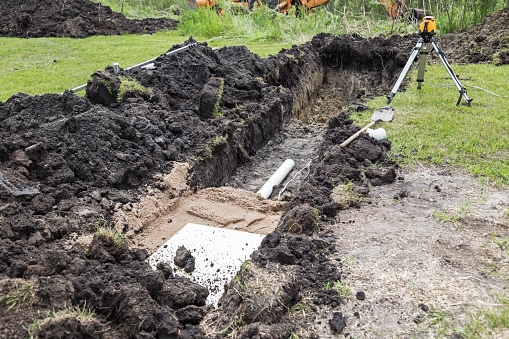
Sump pump water is directed to a specific location, such as a creek, a dry well, a pond, or a community drain. Set your drain point where water will not return to your home.
Keep the pup at least 10 to 20 feet away from your home’s foundation. Some cities have building laws that dictate where your sump pump can drain, so check with your local government first.
Keep this in mind. To compensate, you may need to connect an additional drainage hose and increase the horsepower of the sump pump you chose.
What are the benefits of sump pumps?
Sump pumps can not only drain water from your basement, but they can also pump groundwater away from it. In addition, some pumps can react when they detect water in the soil, preventing the problem from occurring in the first place. The water will then be drained from the earth and away from your property.
Mold avoidance
Sump pumps can help prevent mold growth in your basement by preventing floods and water damage. Unfortunately, mold thrives in wet environments and can harm your health. It can potentially be fatal in some situations.
Sump pumps will remove the moisture from your basement and prevent it from standing. Mold will not develop or cause damage if there is no standing water or moisture.
Preventing fire
These pumps can also help to avoid electrical fires and fire damage. Water can seep into electrical circuits or outlets when your basement floods, creating short circuits or electrical fires.
Here are more benefits:
- Keep the paint and other wall coverings from peeling and protect basement appliances from corrosion, such as the washing, dryer, and spare freezer.
- Keep termites and other insect incursions at bay.
- Improve the quality of your indoor air.
- Maintain your foundation.
- Make the basement more comfortable and dry all year.
- No matter what the weather does, you can have peace of mind.
- Meet the criteria for basement flood insurance coverage under your homeowner’s policy.
Types of sump pumps
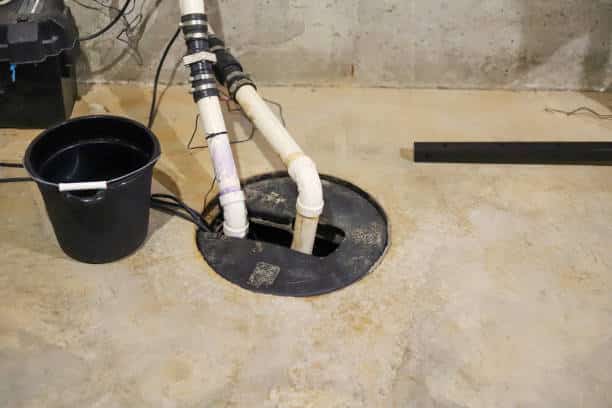
Submersible sump pumps
Submersible pumps combine the pump and the motor into a single unit. They are submerged and enclosed within a basin in your basement. Submersible pumps are often quieter, take up less room in your basement, and clog less than pedestal pumps because they are submerged in the water basin.
However, because of the consequences of submersion in water, they may not last as long as conventional sump pumps. Nevertheless, this is still the best solution for residences at risk of floods.
Pedestal sump pumps
A pedestal sump pump unlike a submersible sump pump, a pedestal sump pump has a different engine and pump. The motor is mounted on a pedestal above the basin, and a pipe connects it to the basin, where the pump is installed. The pump directs water through the hose to the chosen drain region.
Because the motor is not immersed, it has a longer lifespan than other sump pumps and is easier to access for maintenance. However, it can be noisier and take up more room than a submersible pump.
Battery-operated backup
A standby battery backup sump pump is a good method to protect against flood damage. A battery backup with a float switch lets your sump pump run even when the power goes out during a storm, which is when you need it the most.
When the power goes out, so does the pump’s major power source. When the water level in the basin rises, the float switch is tripped, triggering your battery operation.
Water-powered backup
A water-powered backup clears the water in your basin through increased water pressure. A water-powered system does not require backup monitoring or battery replacement.
However, using additional water dramatically raises costs and is quite controversial. As a result, some cities do not permit its installation.
Sump pump/combination
It is also feasible to purchase an all-in-one sump pump that incorporates both a primary and backup pump. It may be less expensive than purchasing each separately, but they are often huge and may not fit in smaller sump pits.
What type of sump pump do I need?
Choosing the appropriate sump pump is vital for the safety of your home. First, select a pump with sufficient horsepower to handle your flooding. You are still at risk of flooding if you choose a sump pump with less horsepower than is required for the level of flooding in your location.
At the same time, a larger horsepower than necessary will cause cycling or the pump to turn on and off frequently, reducing the pump’s lifespan.
Sump pump switch types
Sump pumps can be controlled via a switch system. The pump can be turned on and off separately using a switch. On the other hand, Switches work differently, even though they achieve the same result. The following are some examples of switches and how they work:
- Pressure switch: A pressure switch detects the amount of pressure in the water as it rises and, to a certain extent, activates the pump’s activity.
- Float switch: A float switch is a float connected to the pump that rests on the water’s surface. As the water level rises, the float rises, and the pump activates.
- Diaphragm switch: This switch works similarly to your diaphragm, turning concave as pressure rises and back when pressure falls, in and out. It is the most frequently used since it rarely becomes stuck on or off.
- Electronic switch: The electronic switch operates without a float by sensing the water pressure within the basin. The pressure activates the probes and the pump as the water level rises.
Accessories for Sump Pumps
There are also various sump pump add-ons to consider. A water alarm attachment, for example, acts as a last line of defense, alerting you when your sump pump malfunctions before any damage is done.
In addition, a discharge hose aids in the extension of your drainage point away from your property.
The price of a sump pump
A basement submersible sump pump will typically cost between $100 and $400, depending on horsepower and flow rate, with sump pumps for commercial use costing between $500 and $1,000. The following are some factors to consider when evaluating the cost of a sump pump for your home:
1. Sump pump type
Your cost will be determined by the type of sump pump you select for your home. The sump pump’s material, size, horsepower, and additional features, such as a backup battery or a switch type, can all add to the cost.
2. Building material for the basement
The cost of installation may be affected by the floor of your basement. If your basement is made of concrete or cement, the floor at the lowest point of your basement, where you intend to put the pump, must be removed. The higher the labor cost, the thicker the cement.
3. Drainage
Extension hoses or yard drainage lines can raise installation expenses if your city demands a drainage point from your residence. Not to mention that they might be a nuisance in your yard and even freeze in the winter.
4. Permits
The cost of a permit varies depending on the location. Therefore, it is advisable to plan ahead of time. The guidelines will also assist you in calculating the job’s cost.
5. Qualified Professional
If you know what you’re doing, installing the sump pump can save you a lot of money. However, if you are doubtful, it is better to seek the advice of a licensed professional. The cost of installation is less than that of treating a flooded basement.
Are sump pumps necessary?
Sump pumps are required for homes that are prone to flooding. Flooding can be dangerous for your house and health, caused by above-average rainfall or basements built below the water table.
Even if your home doesn’t flood, moisture can lead to mold growth, which increases the risk of upper respiratory infections, allergic responses, and asthma issues. In addition, if you don’t have a mechanism to get water out of your basement, it will gather and eventually flood or dampen it.
While the advantages of sump pumps are obvious, some properties require them more than others. If any of the following apply, we recommend installing a sump pump:
- You live in a region with a lot of rain or snow. We get more than our fair share of rain in the northeast. As a result, basements in this area are extremely vulnerable to floods, in contrast to desert conditions further west.
- Your house is on flood-prone land. Groundwater levels are more likely to rise during heavy rains, snowstorms, and spring runoff in areas with poor drainage, low-lying dwellings, and hills.
- You’ve experienced issues with water in the past. If your basement has previously flooded or you often experience excessive basement moisture levels, installing a sump pump is a good idea.
- You’ve finished your basement. But, even if your home is not classified as a high-risk property, consider installing a sump pump to safeguard your underground living space.
How frequently should a sump pump run?
If you live in a floodplain or your property is below the water table, your pump will run regularly as water collects beneath your foundation and pours into your sump pit.
You should expect to hear your sump pump working overtime during periods of heavy rain or after severe storms. For example, if you reside in a state that receives a lot of snow in the winter, your sump pump will be very busy when the snow and ice melt in the spring.
My sump pump is always on.
Check for burst pipes, overflowing washers, and other water-related household problems if your sump pump operates indefinitely or more frequently than planned. Look inside your sump pit if you can’t locate an evident problem. (Always remember to cut off your pump’s power supply to be safe.)
If the water level in your pump is low, the sensor or float activator arm may be trapped or broken. If you notice a substantial amount of water, contact your utility provider and request that they check for a broken water main.
Other reasons your pump may be running more frequently include the following:
- A clogged or frozen drain line
- A soiled sump pit
- A sump pit that is too tiny or has collapsed
- You’re not aware of a seasonal subterranean spring.
- Sump pumps aren’t always sufficient. If you live in a wet area, ensure you install a powerful pump and that your sump pit is large enough to handle the regular runoff.
My sump pump isn’t working.
What could be worse than constant sump pump action? There is no sump pump motion at all. Therefore, a silent sump pump should be taken seriously, especially if you reside in a low-lying location.
Water will eventually gather in your basement, causing rising dampness and mold growth. In addition, you’ll eventually enter flood territory, so it’s critical to fix your sump pump as soon as possible.
Here are some things you can do:
- First, check to see whether your sump pump’s circuit breaker hasn’t tripped.
- If electricity is not the issue, look at your pump’s float activator arm: It could be stuck in the off position (remember to switch off the power supply to your pump before starting).
- Then, clean out any trash or buildup in your sump pit.
- If it still doesn’t work, disconnect your pump and pull it out of the pit; remove the bottom cover of your pump and inspect the impeller for obstructions.
- If none of these activities work, you might try replacing your pump’s float switch or pressure sensor. Is it still not working? Then, it may be time for a new pump.
What is the average lifespan of a sump pump?
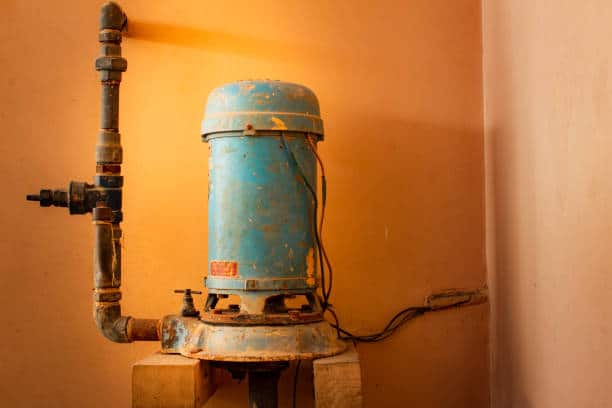
Pedestal pumps, on average, last longer than submersible pumps. They’re more noticeable but easier to service, and industry experts say they can last up to 30 years. On the other hand, submersible pumps are more aesthetically pleasing but more prone to failure. So if you choose a submersible pump, plan on replacing it every five to ten years.
What causes sump pumps to fail?
Sump pumps might fail due to installation, machine, or lifespan issues. If you set up the pump yourself, be sure you understand the procedure. The money you save by installing it yourself is nothing compared to the money you would lose due to water damage if installed incorrectly.
Pump problems can also occur due to continual cycling or switches that become locked on or off. Finally, sump pumps, like any other machine, have a lifespan that ranges from 7 to 10 years, based on usage.
How can I know if my sump pump needs to be replaced?
If your sump pump makes loud noises, runs unusually long, cycles sporadically, or is more than ten years old, it is probably time to replace it.
Loud noises originating from the sump pump pit suggest some problems with your pump
As the pump nears the end of its useful life, the motor will make roaring noises as it pumps water away from your property.
All sump pumps make noise when they pump water out of the basement, but the noise level should not reach the upper floors of your home. To begin with, motors are rattling, clanging, or screaming signals that the motor is nearing failure or that the pump was placed wrongly.
If the discharge lines from the sump pump’s pit are steeply slanted, a lot of noise will be produced.
In addition, the water will bash into the tubing angles, causing pounding noises to reverberate throughout the basement. Consider coating the pipes with insulation to reduce noise or hire a plumber to redirect the discharge pipe more efficiently.
A loud noise may also suggest a faulty impeller
If the sump pump’s propeller becomes clogged with debris, such as dirt, leaves, and twigs, the pump may shriek and rattle as it attempts to remove water from the basin. Likewise, when the impeller is fractured or otherwise damaged, it can create loud rattling noises.
Consider removing the pump and checking the components to verify they have not been clogged or harmed when not in use.
If the pump is always operating, it has reached the end of its useful life or is soon nearing it
A sump pump should never run indefinitely. First, the pump could be completely the wrong size. A pump that is too tiny for the volume of water it is supposed to displace will struggle to keep up with the demands indefinitely. This will exhaust the pump, overwork the motor, and cause the pump to fail prematurely.
A constantly running pump could result from a faulty or blocked float switch
The float switch is the device that activates the pump. Float switches are lightweight gadgets resting on the rising water’s surface. When the water level in the basin reaches a preset level, the switch activates the pump, causing the floodwaters to be displaced.
If this float switch becomes entangled in wires or pipes or becomes clogged by debris, it will constantly alert the pump to rising water levels. In addition, if the sump pump changes inside the basin and the float switch becomes forced against the pit walls, the float switch can become jammed.
A clogged float switch will keep the pump running. Unfortunately, causing the pump to exert an unreasonable amount of effort. The load put on the motor by this will induce failure much before the pump’s intended lifespan. Therefore, if you hear your pump running indefinitely, you must discover the source of the problem before your pump fails.
A float valve that is too low in the basin can strain the pump unnecessarily
If only a few inches of water are required to activate the pump’s cycle, the pump will repeatedly turn on and off. The pump and its mechanical parts are stressed as a result of the pump’s short cycling.
If your pump is taking ages to empty your basin, it is likely that it does not have the horsepower to do the work. A pump that cannot empty the basin during regular rainfall will quickly become overwhelmed in a severe storm or flood.
The most common mistakes you can make
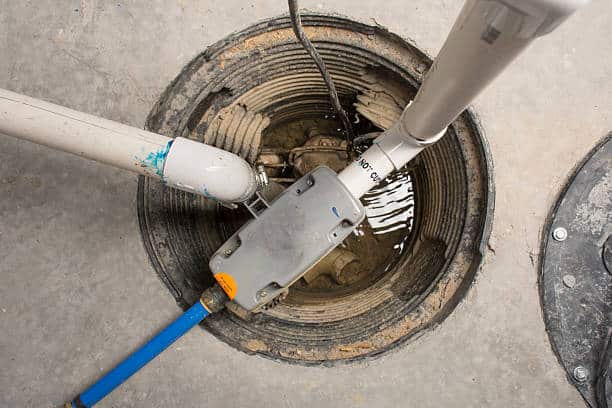
Not testing your pump regularly
Make sure to test your pump system at least once a year to see whether it needs to be repaired or replaced! To test the pump, fill a five-gallon bucket halfway with water and slowly pour it into your sump basin until your pressure or float switch activates. If the water does not drain and your pump does not start, you may need to buy and install a new one.
Pump connection
Surprisingly, one of the most prevalent problems with sump pumps, especially in basements utilized for more than just storage, is that the pump becomes unplugged. Most of the time, the outlet is required. Therefore the pump is unplugged and not put back in. Therefore, it’s better to avoid unplugging your sump pump if possible, so plan your basement’s use accordingly.
Drainage into municipal water or sewerage systems
It was usual for these systems to drain into your local water supplies in older homes. However, laws and restrictions have lately been put in place to prevent this since municipal water and sewer systems were becoming overburdened, especially when it rained.
Failure to perform preventative maintenance
When you have a sump pump system, preventative maintenance is critical. Numerous problems might emerge from debris in the pump, bad wiring, or even broken pipes.
Early detection of these concerns can help to avoid greater, more expensive problems in the future. In addition, sump pumps are essential for keeping moisture out of your home and averting various problems, including basement flooding and mold. Maintain and care for your pump properly, and you’ll enjoy a dry, pleasant house for many years.
Keeping a sump pump in good working order
Sump pumps must be serviced regularly. During an emergency, dirt, sand, and other debris can clog the pump and prevent it from running at full capacity. Unfortunately, most homeowners don’t realize their pump isn’t operating until it’s too late; we recommend servicing your sump pump every 6 months.
The good news is that:
You can conduct the majority of the maintenance yourself if you are handy. Spruce.com has an easy guide, or you can follow these steps:
- First and foremost, ensure that the pump is upright. Pumps frequently shift due to motor vibration. The float arm can become jammed if the pump is not sitting correctly.
- Check the GFCI outlet to ensure it is plugged in and the cord is in excellent working order. If moisture is present, the GFCI breaker may trip, causing the sump pump to stop working. If this is the case, you will need to reset it.
- To test the pump, pour some water into the pit. It should start immediately and swiftly drain the water. If not, have a professional service it. While checking the pump, check to see if water is flowing through the discharge pipe.
- Remove any debris and disconnect the check valve.
- Examine the backup pump’s battery. Using a multimeter, check the battery’s charge regularly. Connect a maintenance-free battery to your backup if possible; an AGM (absorbed glass mat) battery is one of the best choices for a sump pump.
If it isn’t your thing, hire a professional to service your pump. They will check that the pump is operating fully and test the backup power source and alarm. They will also inspect the discharge pipe for clogs.
Consider installing a backwater valve to keep your sewer line from backing up into your home. It’s also a good idea to clean out any drains inside your home and in neighboring municipal storm drains.
What to do in the event of a flood
Despite your efforts and cautious preparations, your home may be subjected to heavy rain and rapid flooding. The best thing you can do in this situation is damage control.
- Check that the float is not trapped and that the sump pump is still connected.
- Check your GFCI outlet and, if required, reset it.
- Assess the damage and try to salvage what you can.
- Request assistance in restoring your property to its pre-flood condition.
How to avoid future damages
After being in flooded places and witnessing firsthand how much devastation a large volume of water can create, it’s evident that it’s not an experience anyone wants to repeat. So homeowners” first goal becomes preventing future property damage.
This is where preventative measures come into play:
- First, investigate your city’s internet resources to see whether they offer a flood zone map, as Nashville does, so you know what to expect where you reside (especially if you are new or are building in the area).
- Downspouts should be directed to places where the water can be absorbed into the earth, and any drains and pipelines should be cleared of ice and debris.
- Plant trees and a rain garden to absorb and reduce runoff.
- Install a rain barrel to utilize water and avoid flooding.
- Clear snow away from your home and clear any doorways, stairwells, and windows to avoid leaks and flooding.
- If your pipes freeze, turn off the water as soon as temperatures increase, and contact a professional to help thaw or repair them to avoid water damage.
More tips
Sump pumps keep your basement from flooding and keep you safe from health and safety dangers like mold and fire. Once installed, you can further secure your house by doing the following:
- Checking your pump
- In the event of a power loss, consider a battery-powered backup.
- Pumping the wastewater further away from the house (say, 20 feet or more)
Install a sump pump before you need it, regardless of the season, to prevent your home from flooding and property damage.

Jay
Jay is a health and wellness enthusiast with expertise in water quality and nutrition. As a knowledgeable advocate for holistic well-being, Jay successfully manages Type 2 Diabetes through informed lifestyle choices. Committed to sharing reliable and authoritative insights, Jay combines firsthand experience with a passion for enhancing health."
